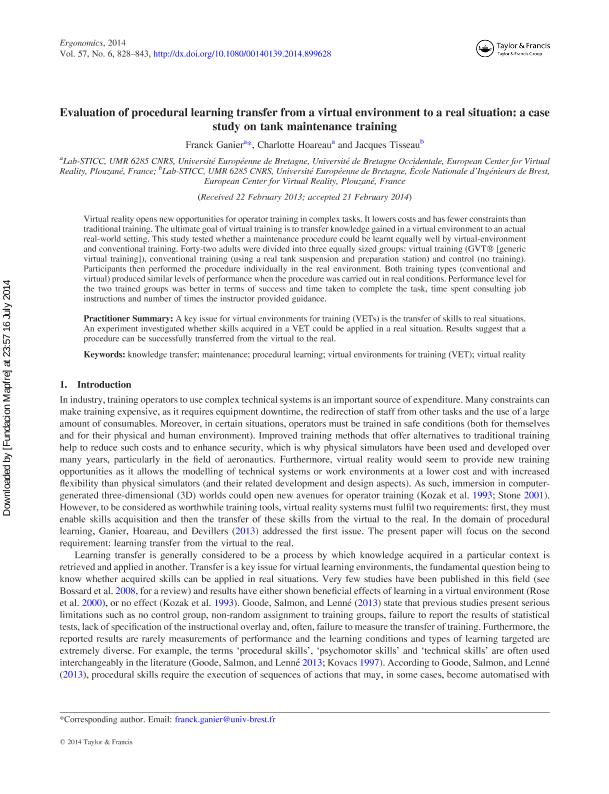Evaluation of procedural learning transfer from a virtual environment to a real situation : a case study on tank maintenance training

Contenido multimedia no disponible por derechos de autor o por acceso restringido. Contacte con la institución para más información.
| Tag | 1 | 2 | Valor |
|---|---|---|---|
| LDR | 00000cab a2200000 4500 | ||
| 001 | MAP20140025701 | ||
| 003 | MAP | ||
| 005 | 20140724124911.0 | ||
| 008 | 140717e20140602esp|||p |0|||b|spa d | ||
| 040 | $aMAP$bspa$dMAP | ||
| 084 | $a875 | ||
| 100 | 1 | $0MAPA20140012121$aGanier, Franck | |
| 245 | 1 | 0 | $aEvaluation of procedural learning transfer from a virtual environment to a real situation$b: a case study on tank maintenance training$cFranck Ganier, Charlotte Hoareau, Jacques Tisseau |
| 520 | $aVirtual reality opens new opportunities for operator training in complex tasks. It lowers costs and has fewer constraints than traditional training. The ultimate goal of virtual training is to transfer knowledge gained in a virtual environment to an actual real-world setting. This study tested whether a maintenance procedure could be learnt equally well by virtual-environment and conventional training. Forty-two adults were divided into three equally sized groups: virtual training (GVT® [generic virtual training]), conventional training (using a real tank suspension and preparation station) and control (no training). Participants then performed the procedure individually in the real environment. Both training types (conventional and virtual) produced similar levels of performance when the procedure was carried out in real conditions. Performance level for the two trained groups was better in terms of success and time taken to complete the task, time spent consulting job instructions and number of times the instructor provided guidance. | ||
| 773 | 0 | $wMAP20100019818$tErgonomics : the international journal of research and practice in human factors and ergonomics$dOxon [United Kingdom] : Taylor & Francis, 2010-$x0014-0139$g02/06/2014 Volumen 57 Número 6 - junio 2014 |

